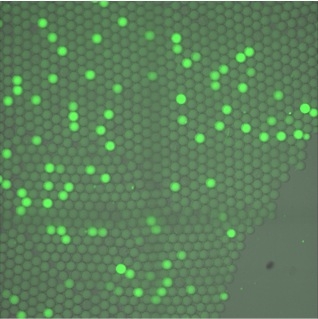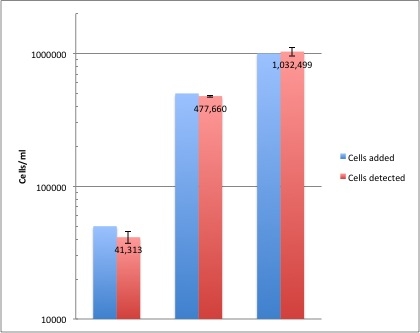Low-Concentration Quantification
Jonathan Didier
Droplet microfluidics allows us to separate a larger volume into smaller equal sized volumes in the picoliter range, which can offer advantages for high-throughput screening and sensitive assays, with a much smaller initial volume size. At present, these advantages are being leveraged to perform massively multiplexed reactions as described in a number of research pages on this site. In my work, I leverage the droplet sequestration ability to create a large number of separate reaction vessels in order to detect and quantify very low concentration substances. By splitting the overall volume into a large number of very small volume droplets, I can create a localized high concentration in a single droplet out of a low concentration solution. I can use a variety of chemical reactions to create and multiply a detectable signal, such as using an enzyme with a fluorogenic substrate or a chemoluminescent reaction. We have demonstrated detection of substances in the attomolar range, and microorganisms at concentrations of 10-5 cells/ml.

Figure 1. Droplets containing fluorescent signal-multiplication product. Each droplet contains a single molecule of the compound/microorganism to be detected.

Figure 2. Detection of microorganisms. Average of 3 measurements, ± SEM
